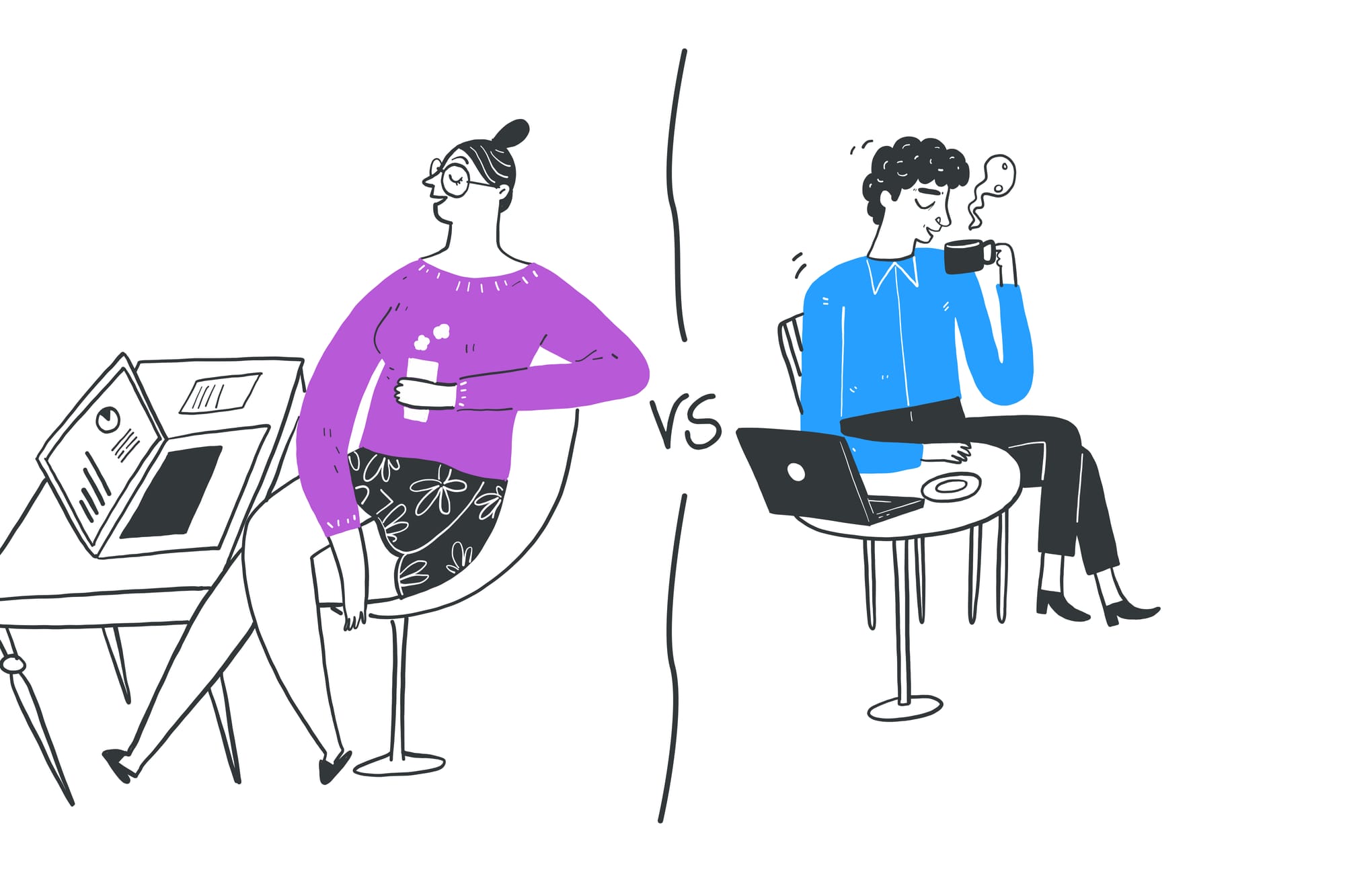Project management and engineering leadership often feel like steering through a maze of high-pressure situations. Sometimes, this pressure doesn't come from within the organization; sometimes it comes directly from your clients, especially when they're looking for the latest and greatest in tech solutions. While aiming for a healthy and collaborative client relationship, let's be real — running into problems is part of the journey.
In this blog post, I’m going to share some personal insights and strategies for managing those tricky client scenarios in software development. Whether it's dealing with ever-changing demands or guiding clients who can't seem to decide what they want, I’ve got some tips to share. So, let’s explore how to keep your project on course, even when the going gets tough.
🚨 Get your FREE Guide 🚨
If you’re a software engineer or engineering leader and you want to promote good coding habits 🕊️ in software development (and eliminate the not-so-good ones 💩), then download: The Good, the Bad, and the Ugly: Exploring 26 Behavioral Practices in Software Development
Who Is a Difficult Client in Software Development?
Dealing with difficult clients can sometimes feel like being in a never-ending game of Whack-a-Mole. They pop up with "minor issues" at the most inconvenient times or decide that after-hours is the perfect moment to discuss the trivialities that could've waited until morning. Then there's the classic move of dropping last-minute feature requests on your lap or suddenly revealing a gap as wide as the Grand Canyon between their expectations and reality. This isn’t just a massive headache; it can stretch your resources thin, crank up team turnover, and cast a gloomy cloud over the workplace, killing productivity and morale.
Spotting these issues early on is key. Let's explore some scenarios you might encounter when building cool technology.
"I don’t know what I want."
Sometimes your clients may not have a clear idea of their project's direction when they approach you. They might provide a vague outline of their goals, prompting you to inquire further: Why not consider an iOS platform? Why not develop a web application instead? Why limit the target market to this specific demographic?
Often when you seek clarification, it becomes apparent that they lack precise reasoning behind their decisions. This ambiguity poses a significant challenge because, without a clear understanding of their objectives, there's a risk of building a product that doesn't align with their true needs.
"I haven’t talked to our end user, should I?"
In some cases, clients might not have direct access to end-user groups. This often leads to relying on gut instincts rather than actual user feedback to guide their decisions. That being said, I do sympathize and fully understand the complexities involved in reaching out to end users, especially in specialized B2B markets.
Occasionally, companies opt not to interact directly with end customers because they believe the users may not fully grasp the problem or that the feedback won't be beneficial. Sometimes, egos come into play, potentially triggering a downward spiral in the market research phase.
"That’s not how to do it; do it like this!"
This type of client often presents themselves as know-it-alls, convinced they know the best way to solve the problem. If that’s the case, why are they seeking your help? These clients scrutinize your approach, highlighting perceived flaws, but during the clarification stage, it becomes apparent they are unsure or their idea lacks coherence because it overlooks aspects of which the client is not familiar.
"Building this feature shouldn’t be a problem."
Frequently, there's a lack of comprehension regarding the impact of technology changes versus their impact on business. It may seem simple — just adding a button, for instance. However, the implications can vary significantly. On the business side, even a seemingly minor change can carry substantial costs or ramifications. Conversely, what appears to be a robust technical solution may not be as challenging after all because third-party services can be leveraged to simplify the process.
"I need it done tomorrow."
Clients often lack the understanding that you have other clients and anticipate you to warp the space-time continuum to meet their unrealistic deadlines. But I understand that they also make such demands under their own intense pressures, sometimes failing to grasp the complexities involved or the resources needed.
While it's crucial to communicate challenges, negotiating and creative problem-solving can often find a compromise. Educating clients on processes and setting clear expectations can help prevent such last-minute demands, fostering a collaborative and understanding relationship that ensures successful project delivery.
"We’re already paying you so much, can’t you give us a discount?"
This client believes your services’ prices are overinflated and wants to get some freebies out of you. What they may not realize is the intricacy and value behind the pricing structure. Offering discounts can sometimes devalue the expertise and effort put into the service, potentially setting a precedent for future negotiations. Communicating the value proposition clearly and transparently is crucial, emphasizing the quality and expertise that justify the pricing.
"Why the hell didn’t you inform me about this!?"
Dealing with a verbally abusive client, although uncommon, poses significant challenges. They're the ones who raise their voices at your team and nitpick even the smallest details. Unfortunately, changing their behavior may prove futile. In such cases, it may be prudent to part ways with them.
Maintaining a healthy and respectful working relationship is paramount for both parties. Hostile or disrespectful communication not only dampens morale but also impedes productivity and stifles creativity. Addressing such behavior assertively is crucial, setting clear boundaries and expectations for respectful communication. Failure to address the situation not only jeopardizes your team's wellbeing but also erodes trust. The consequences could be devastating in the long run.
"It’s okay to store user data, they won’t even know."
This client disregards ethical considerations and user privacy concerns, prioritizing their own convenience or business interests over transparency and data protection. They may push your development team to collect and store user data without proper consent or disclosure, risking legal and reputational repercussions.
"Your management style is hindering progress."
This client feels that your leadership approach is impeding the project's success. They may express frustration with the team's organization, communication practices, or decision-making processes, indicating a clash of personalities or management philosophies.
"Can't you just squeeze in this feature?"
There sometimes is a tendency to continuously add more features before shipping products to production. Initially, it seems harmless, but as more features are piled on, problems arise. This leads to longer lead times, and ultimately, the size of the application becomes enormous. Eventually, the entire system can collapse.
This client here demonstrates a lack of understanding of agile development principles and the importance of sprint planning. They disregard the team's capacity and the need for prioritization, often disrupting the workflow and causing unnecessary stress and rushed implementations.
How to Handle Difficult Clients
In my experience, dealing with clients often entails managing emotions - both yours and theirs. It's akin to being a therapist. Don't become frustrated if they're unsure of what they want or if you're the right fit for them. Keep asking questions until you gather the information necessary to determine if it's the right project for you. Below are several strategies you could employ to effectively manage challenging clients.
Stay Calm
Maintaining a calm demeanor is crucial when dealing with pushy clients in software development. Emotions can escalate tensions and hinder effective communication. By staying composed, you can navigate challenging situations more effectively and make informed decisions. Take deep breaths, focus on the facts, and approach interactions with a level head. Remember that your composure sets the tone for the entire team and reinforces your professionalism.
Active Listening
Pay close attention to their concerns, requirements, and suggestions. Sometimes, a client's assertiveness stems from genuine concerns about the project's success. By listening attentively, you can identify their underlying issues and work toward a solution that addresses their needs while aligning with your team's capabilities and project goals.
Always Have a Good Answer
When responding to pushy clients, ensure your replies are clear, concise, and respectful. Acknowledge their concerns and provide detailed explanations or solutions where possible. A well-crafted response demonstrates professionalism and can help diffuse tense situations.
Set Clear Expectations
Establishing clear expectations from the outset is essential in software development. Define project scope, deliverables, timelines, and responsibilities in a detailed agreement. Share this with your client and ensure they understand it fully. When pushy clients request changes or additions, refer back to these initial agreements and evaluate whether the new request aligns with the project's scope. If it doesn't, politely remind them of the agreed-upon boundaries.
Be Transparent
Transparency is key to building trust with pushy clients in software development. Keep them informed about the project's progress, challenges, and any potential roadblocks. If you anticipate delays or changes, communicate these issues promptly. Being open and honest about challenges demonstrates your commitment to delivering a successful project and helps manage the client's expectations.
Educate Your Client
In many cases, clients may not fully understand the technical complexities of software development. Take the time to educate them about the process, potential limitations, and best practices. When clients understand the reasoning behind certain decisions or timelines, they may become more cooperative and less pushy. As mentioned above, those small things technically can be a huge undertakings that may not produce any real benefit for the client.
Prioritize and Negotiate
When pushy clients demand immediate changes or additional features in software development, prioritize their requests based on project impact and feasibility. Negotiate timelines and trade-offs if necessary. Explain the consequences of making unplanned changes, such as potential delays or increased costs. Collaboratively find solutions that balance their needs with the project's integrity.
Document Everything
Maintain detailed records of client interactions, requests, and project changes in software development. This documentation serves as a reference point for addressing pushy client demands. It also helps avoid misunderstandings and disputes in the future. Ensure all project communication is well-documented and easily accessible.
Involve Your Team
Your development team is your greatest asset in managing pushy clients in software development. Involve your team in discussions about client demands and potential solutions. Their insights can provide a fresh perspective and help identify viable technical approaches. Ensure that your team feels supported and understands their role in managing client expectations.
Learn To Say “No!”
While it's important to be accommodating, setting clear boundaries is crucial in software development. Politely but firmly communicate when a client's requests fall outside the project scope or negatively impact project timelines. Emphasize that decisions are made to ensure the project's success and maintain quality.
Escalation Plan
In rare cases, pushy clients may become unmanageable or unreasonable in software development. Develop an escalation plan that outlines steps to address such situations. This may involve involving higher management or seeking legal advice, depending on the severity of the issue. Ensure that you follow the appropriate procedures when necessary. You actually don't want it to ever get here, so doing anything in your power to avoid the escalation (Though, it is good to have a plan.)
Maintain Professionalism
Regardless of the challenges posed by a pushy client in software development, maintain professionalism at all times. Avoid confrontations, remain patient, and be solutions-oriented. A professional approach will reflect positively on your team and organization.
Conclusion:
Dealing with difficult clients in software development can be challenging, but it's a skill that every project manager or engineering leader should master. By actively listening, setting clear expectations, prioritizing transparency, and collaborating with your team, you can effectively manage difficult clients while ensuring the success of your projects. Remember, the key is to strike a balance between accommodating client needs and maintaining project integrity. With the right approach, even the most demanding clients can become valuable partners in your software development journey.





